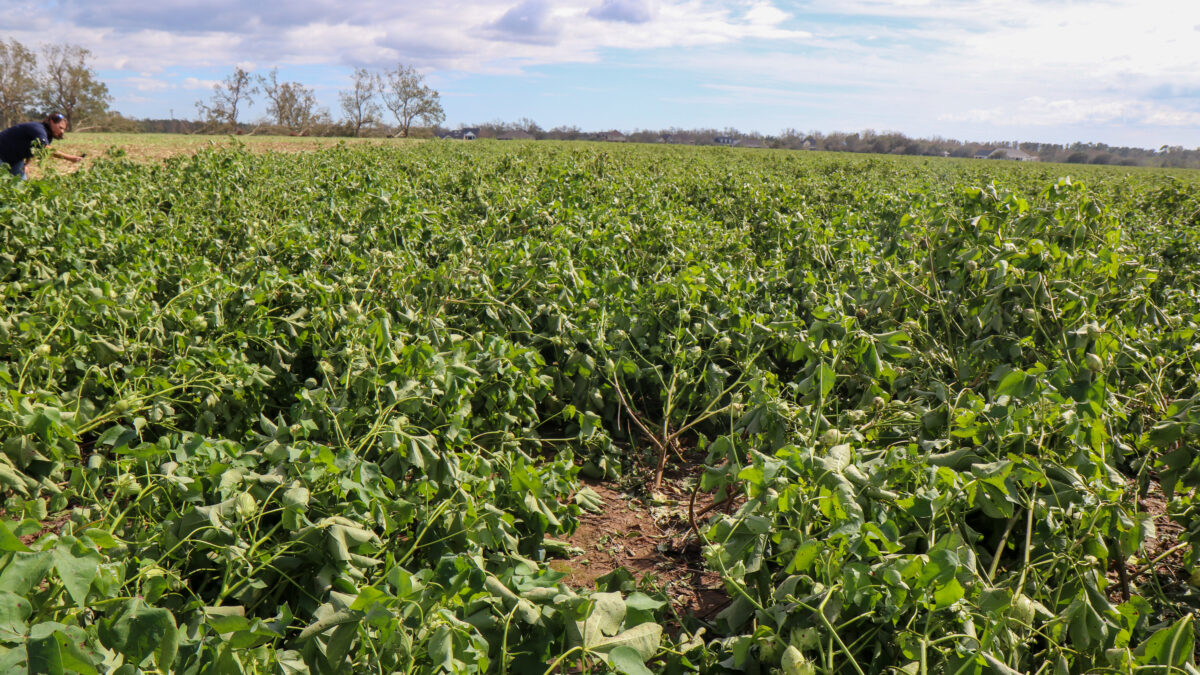Farmers and Ranchers Looking for a Break in the Storm
TOPICS
Farm BillZippy Duvall
President

photo credit: Alabama Farmers Federation, Used with Permission
Zippy Duvall
President
A good many storms have come through Washington, D.C., already this summer. Local rivers flooded, and some days the Capitol dome could barely be seen through the haze. No sooner would one storm clear out but another would take its place. Yet every time I see those clouds roll in over our nation’s capital, I am reminded of a greater, economic storm brewing in farm country.
The clouds gathering over rural America look ready to burst at any moment. Farmers and ranchers are facing the fifth straight year of lower net farm income, and without relief from mounting trade tensions and regulatory burdens, or the certainty of farm programs and a stable work workforce, many family farms may be left unable to withstand the storm’s fury.
If I were a member of Congress, I wouldn’t want to go back and face my rural constituents this fall without the farm bill being a done deal.
Thankfully the sun has broken through on occasion, like with the House passing its 2018 farm bill last week. We also expect the Senate to bring its version of the farm bill to a vote any day now. The leadership of the House and Senate Agriculture Committees have been true to their word in delivering a 2018 farm bill before the current one expires. A lot of hard work and give-and-take have gone into moving this process forward, and we are eager to get a final bill across the finish line and to the President’s desk for his signature. If I were a member of Congress, I wouldn’t want to go back and face my rural constituents this fall without the farm bill being a done deal.
We had hoped for another break in the clouds on the horizon—this time for immigration reform. When Chairman Goodlatte brought forward his AG Act farm labor bill last week, it contained many of the revisions Farm Bureau had been calling for and could have opened the door for meaningful reform to give farmers better access to the workforce they need. While that bill failed on the House floor, we thought we had a second chance at progress when House leadership added the AG Act provisions to a second major immigration bill soon to be considered. For certain, the farm labor provisions needed further improvement, but the proposed bill represented the most meaningful reform for farm labor to come to the House floor in years—and agriculture had a clear voice in the process. Unfortunately, those ag provisions were stripped from the bill at the last minute. This was a frustrating turn of events for agriculture, to be sure. The farm workforce shortage is one of the greatest challenges agriculture faces, and farmers and ranchers deserve better from our lawmakers. Opportunities for reform should not be so rare, and we hope our lawmakers will see the importance of coming together to find solutions to our most complex problems. We will continue striving to achieve some much-needed progress on ag labor.
Finally, the storm that seems to be gathering the most intensity over farm country these days comes from trade winds as retaliatory tariffs have begun to sweep in. Farmers and ranchers need swift solutions to our current trade tensions, to bring certainty and fairness to our international markets. We depend on the global marketplace to keep agriculture thriving in this country, and many farmers planted in faith that there would be a market for their crops this fall. Agriculture exports about 25 percent of our products by value each year: we need trade deals that build on that growth. The current trade storm is already hitting crop, dairy and livestock prices with markets reacting to retaliatory tariffs on agriculture. As of last week, corn and soybean futures fell to their lowest levels of the year, down 51 cents and $1.42 per bushel. Dairy product prices have fallen by more than 10 percent over the last month, and lean hog and live cattle futures have lost 8 to 10 percent of their value since the beginning of the year. U.S. farmers and ranchers need a ray of hope to break through these storm clouds soon. While agriculture’s overall debt-to-asset level is below the historical average, farm debt levels are already at a record high and interest rates are climbing. We need resolution with our trading partners—especially our nearest neighbors in North America—and relief from the impact of tariffs before this storm wipes out farm families struggling to hold on.
While no one can predict how these storms will play out over the rest of the summer, I have faith that farmers and ranchers will continue to band together and press forward. We will continue to speak boldly on behalf of agriculture, because our life’s work is worth protecting. We will come alongside our neighbors in good times and bad, and we will pray for the storm clouds finally to break.
Zippy Duvall
President
Vincent “Zippy” Duvall, a poultry, cattle and hay producer from Greene County, Georgia, is the 12th president of the American Farm Bureau Federation.
Top Issues
VIEW ALL